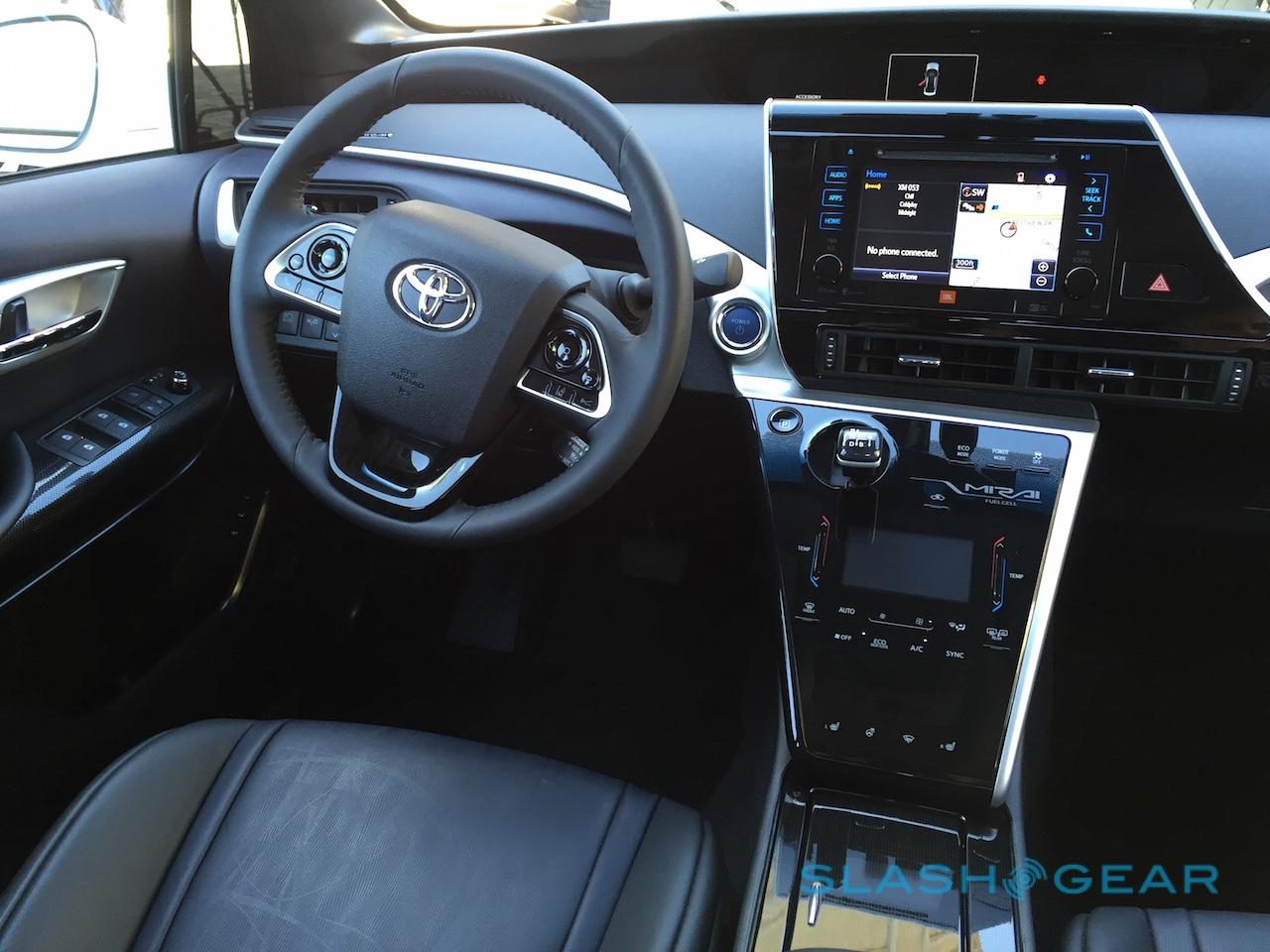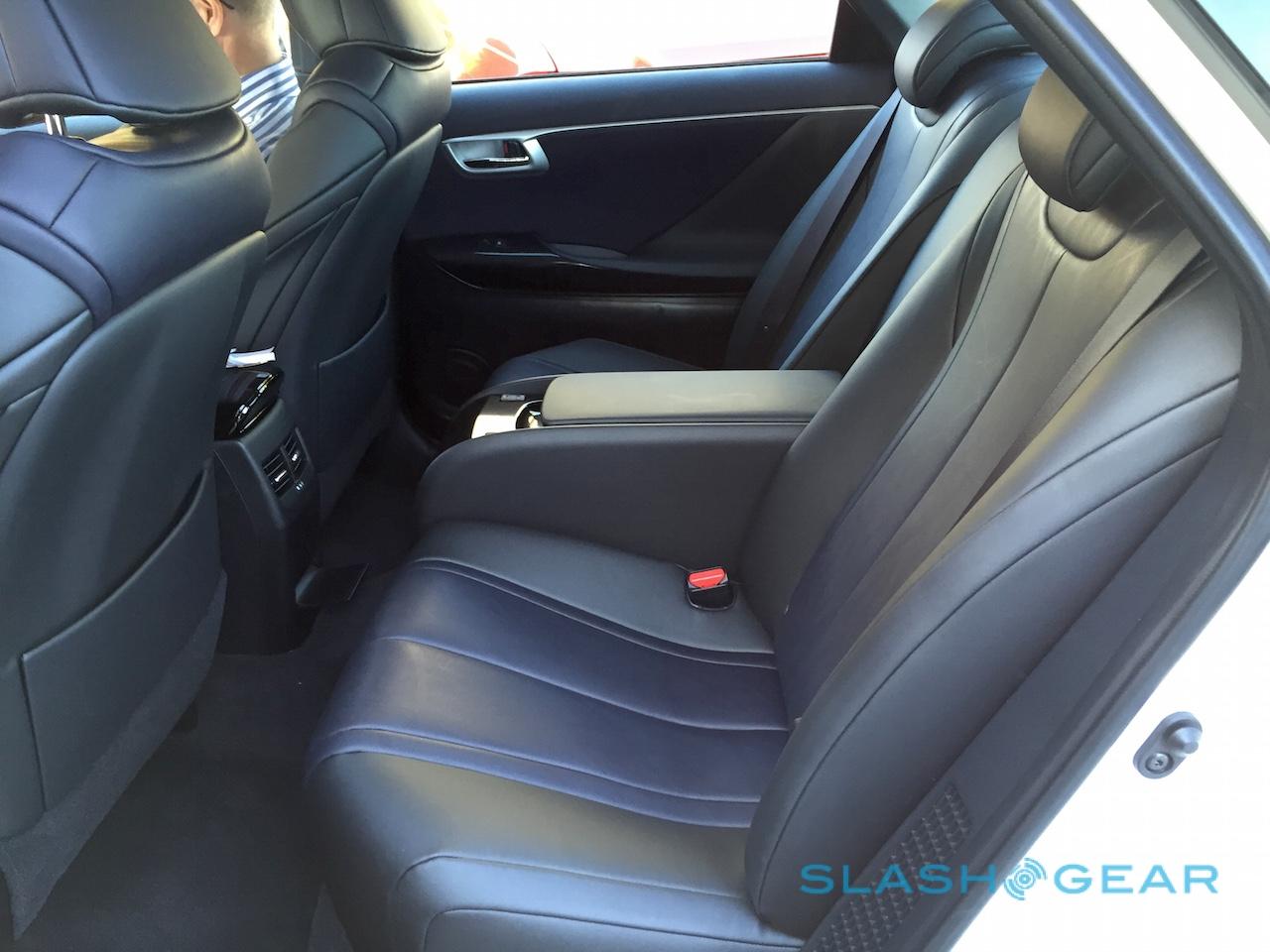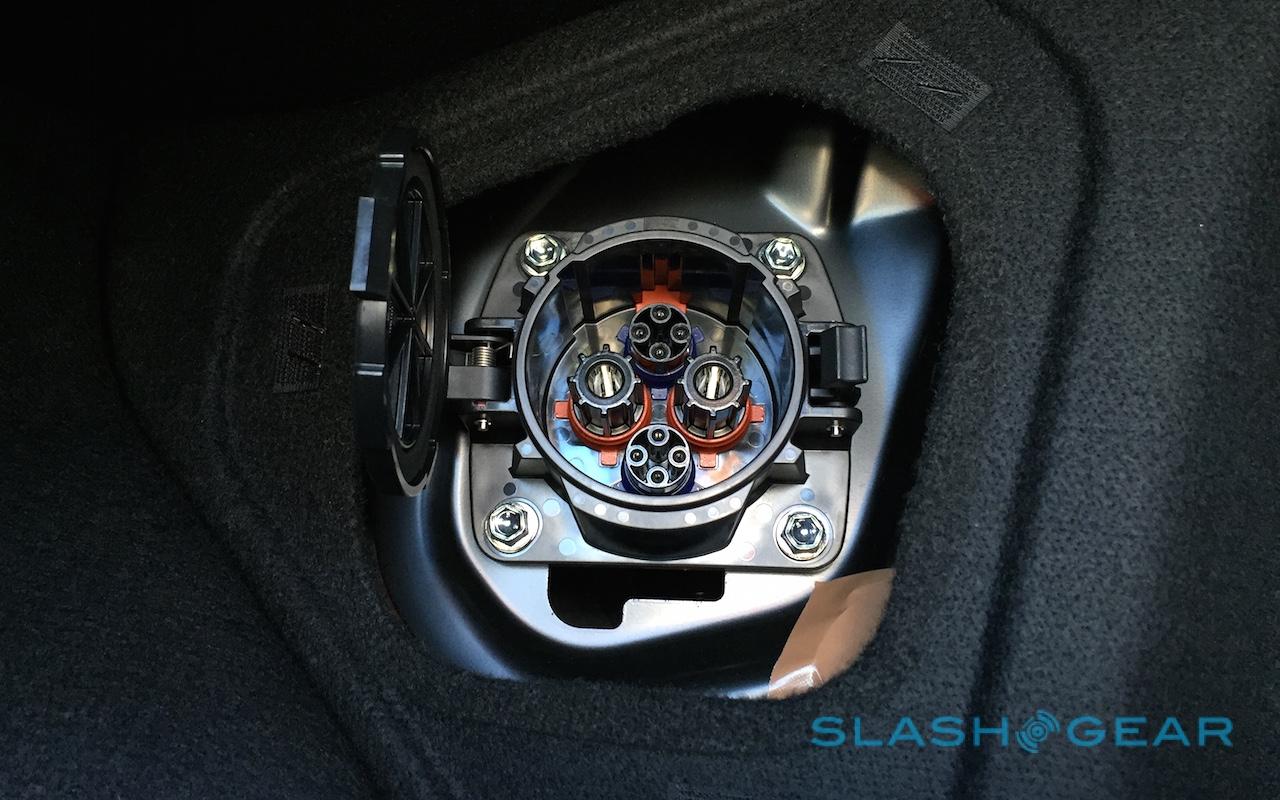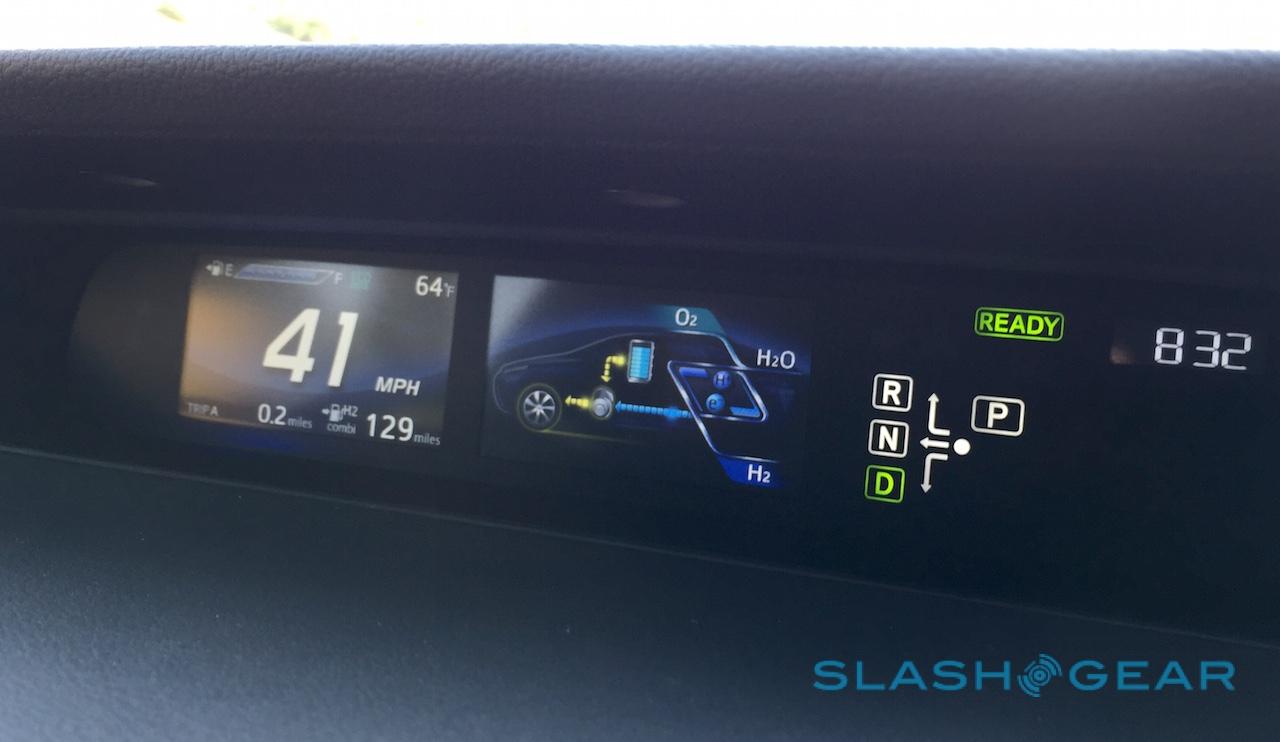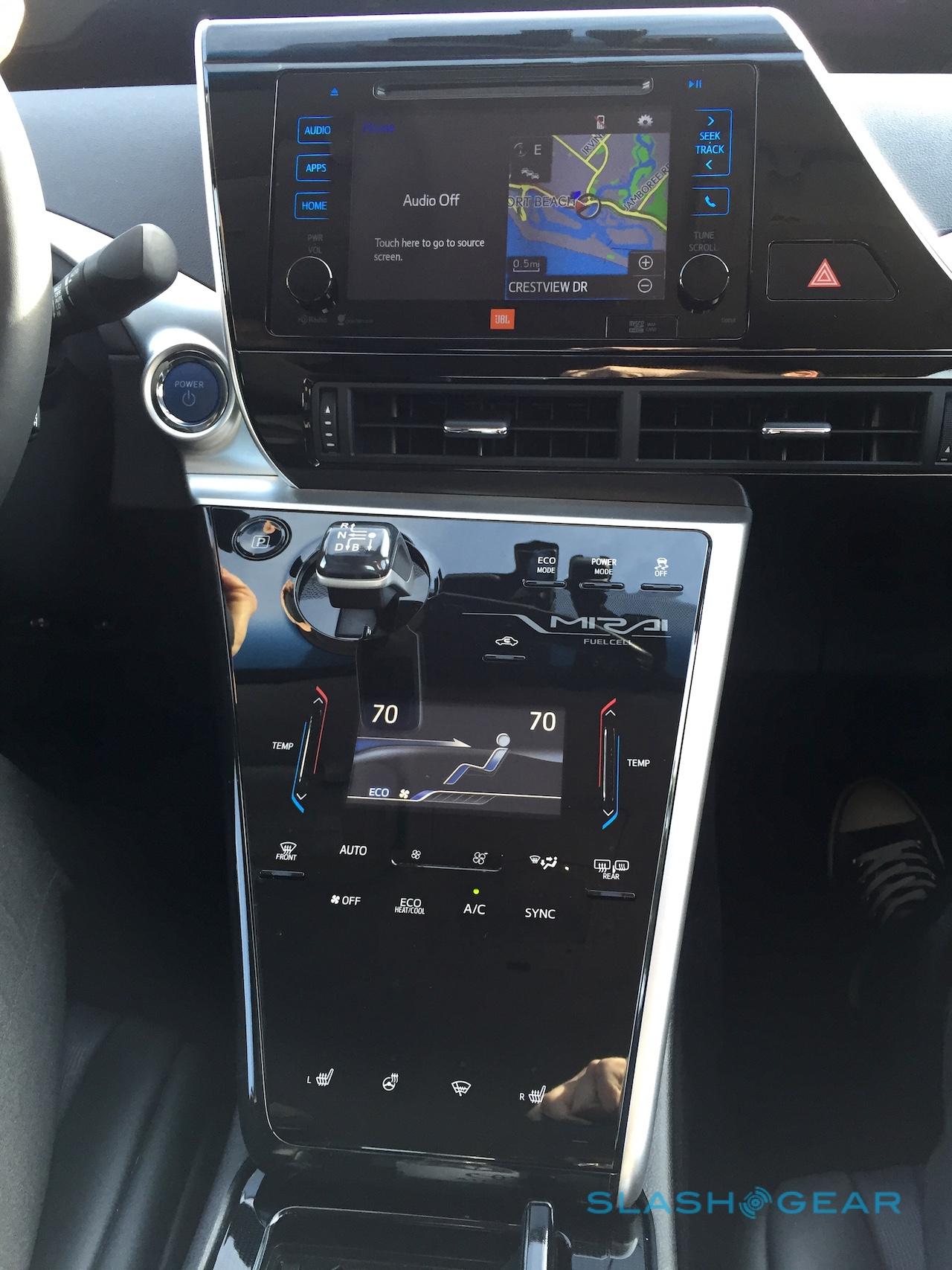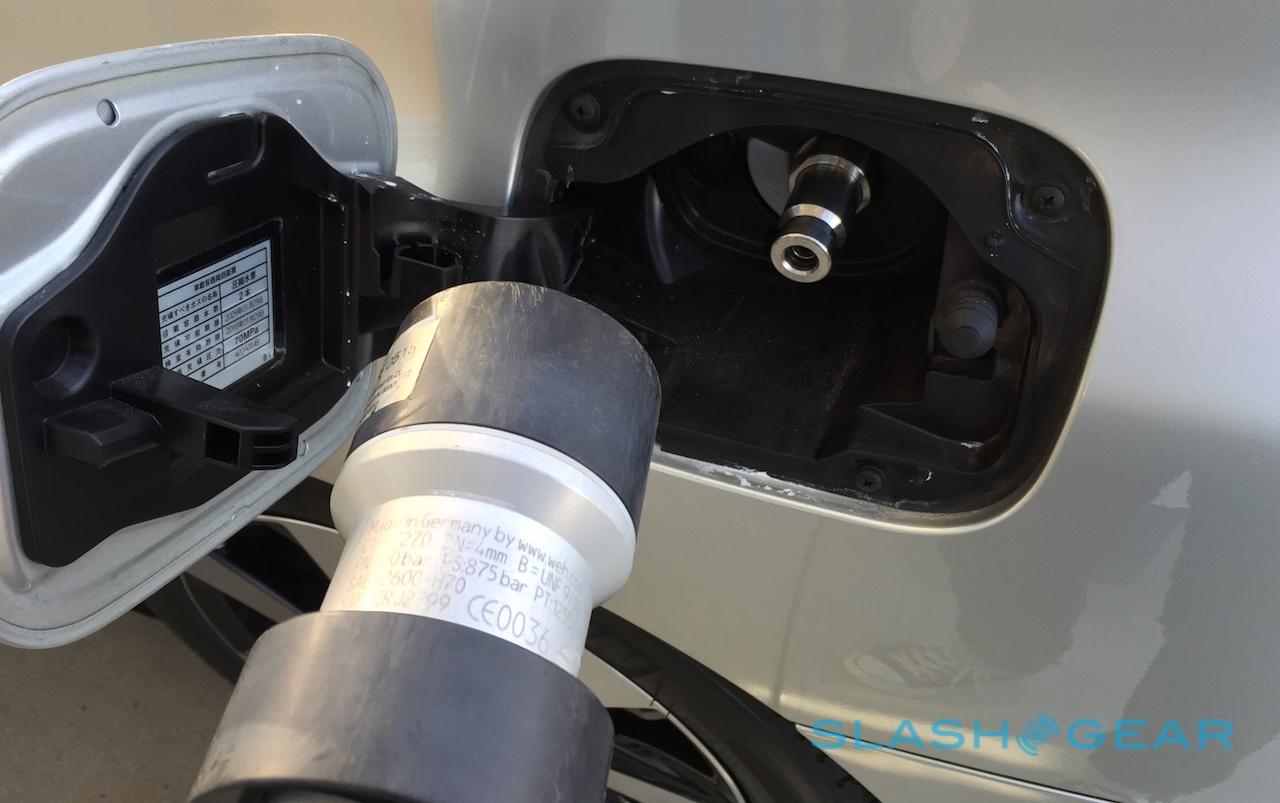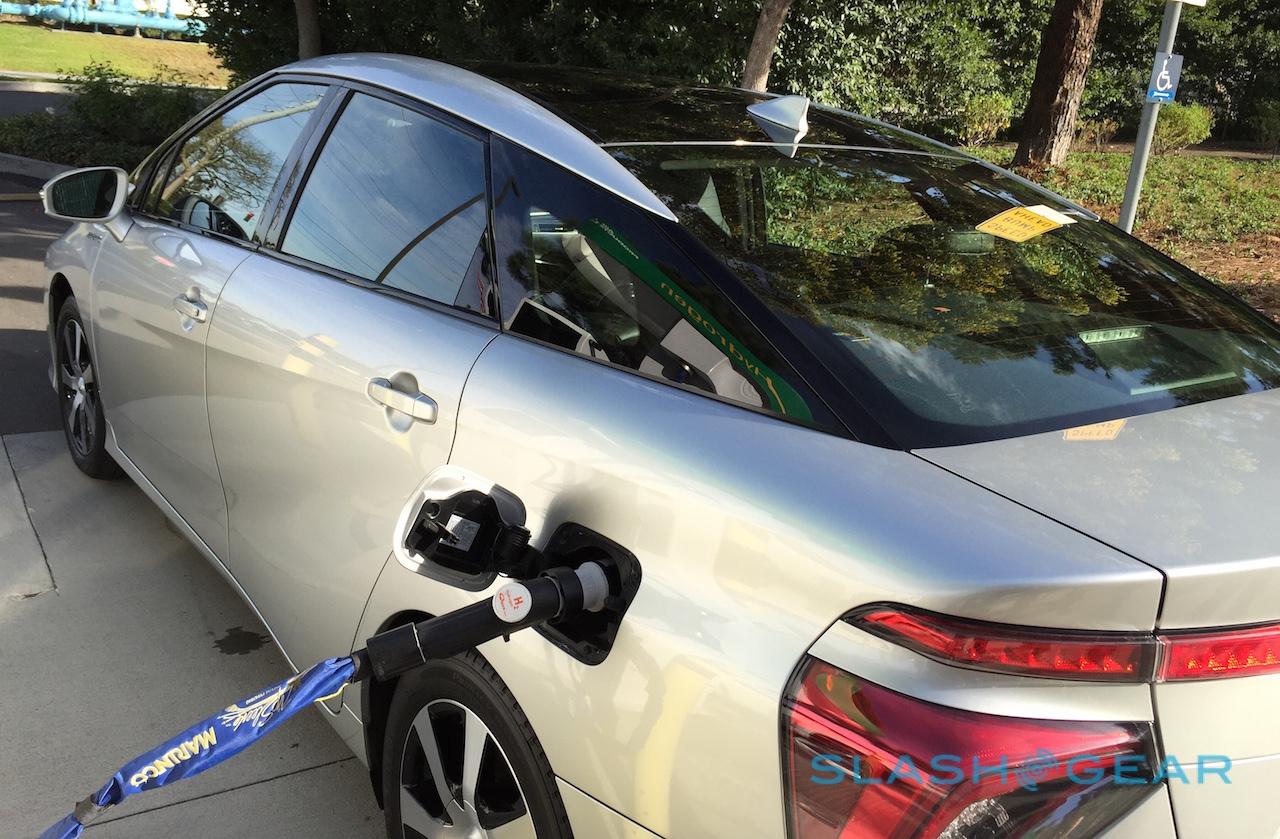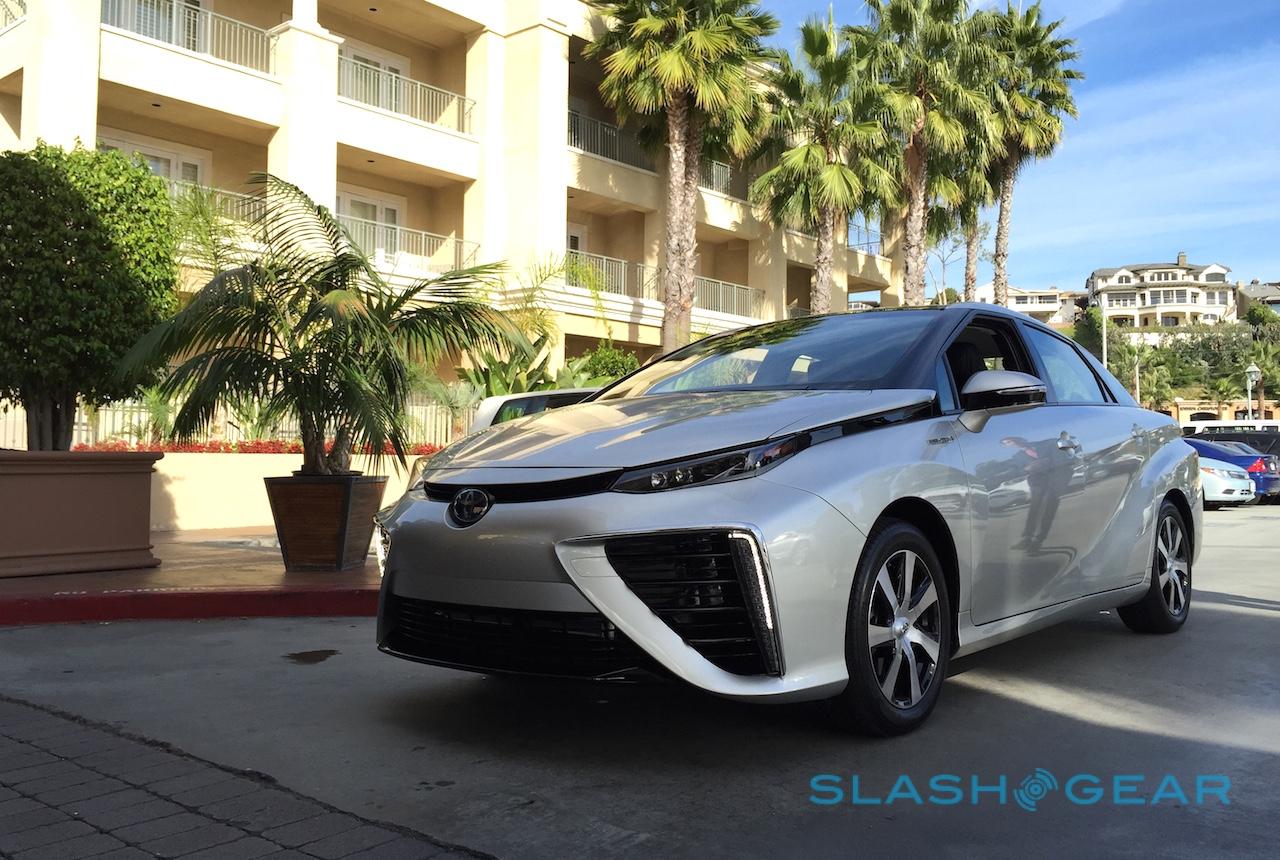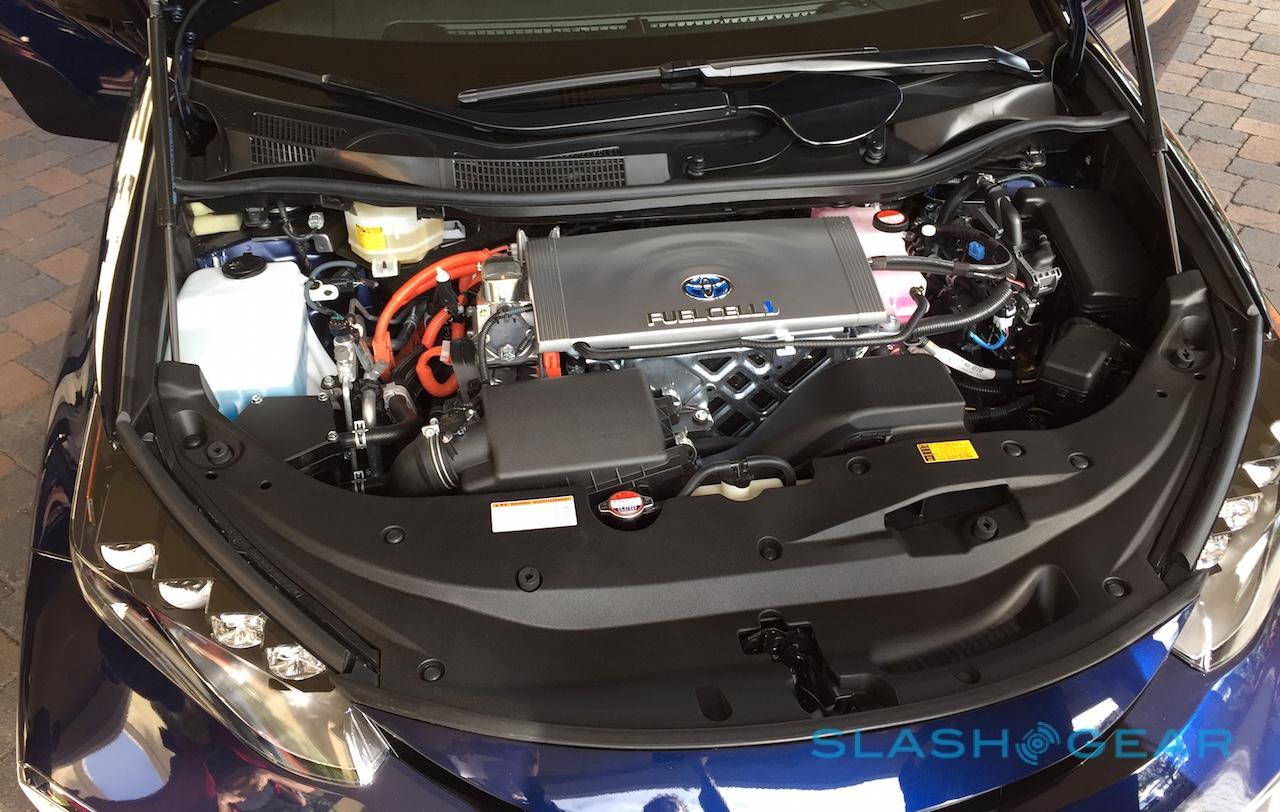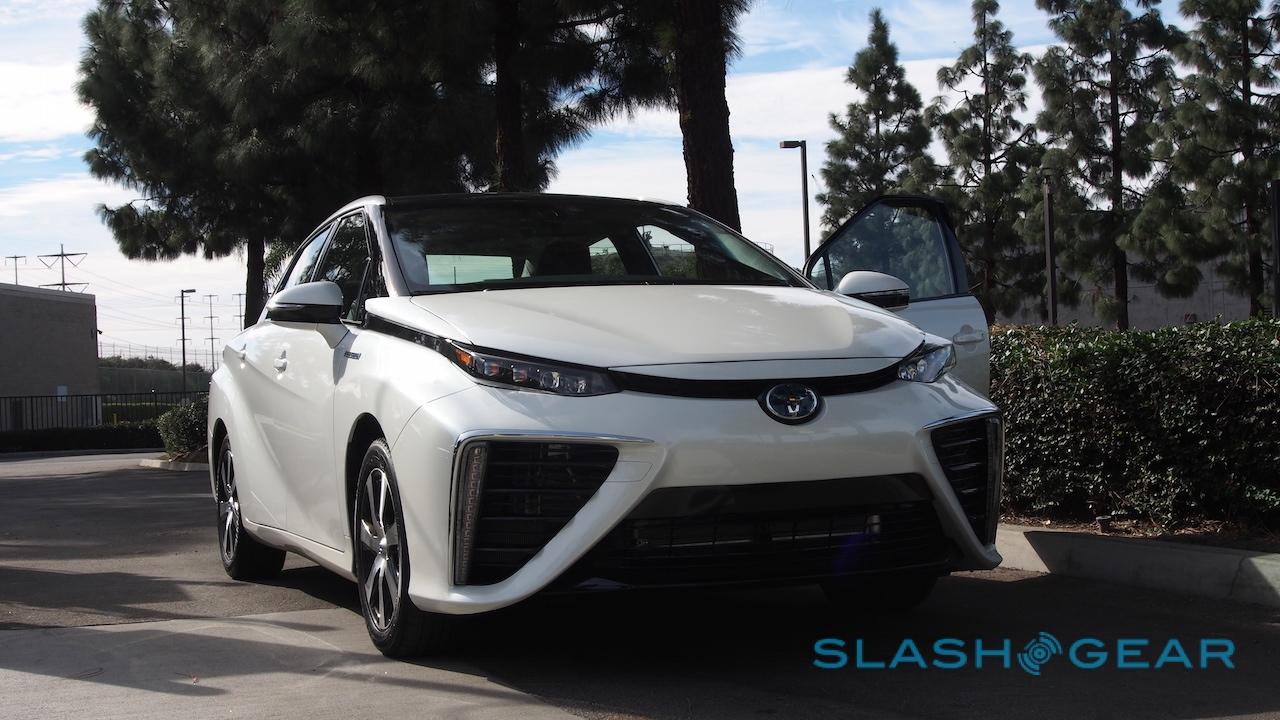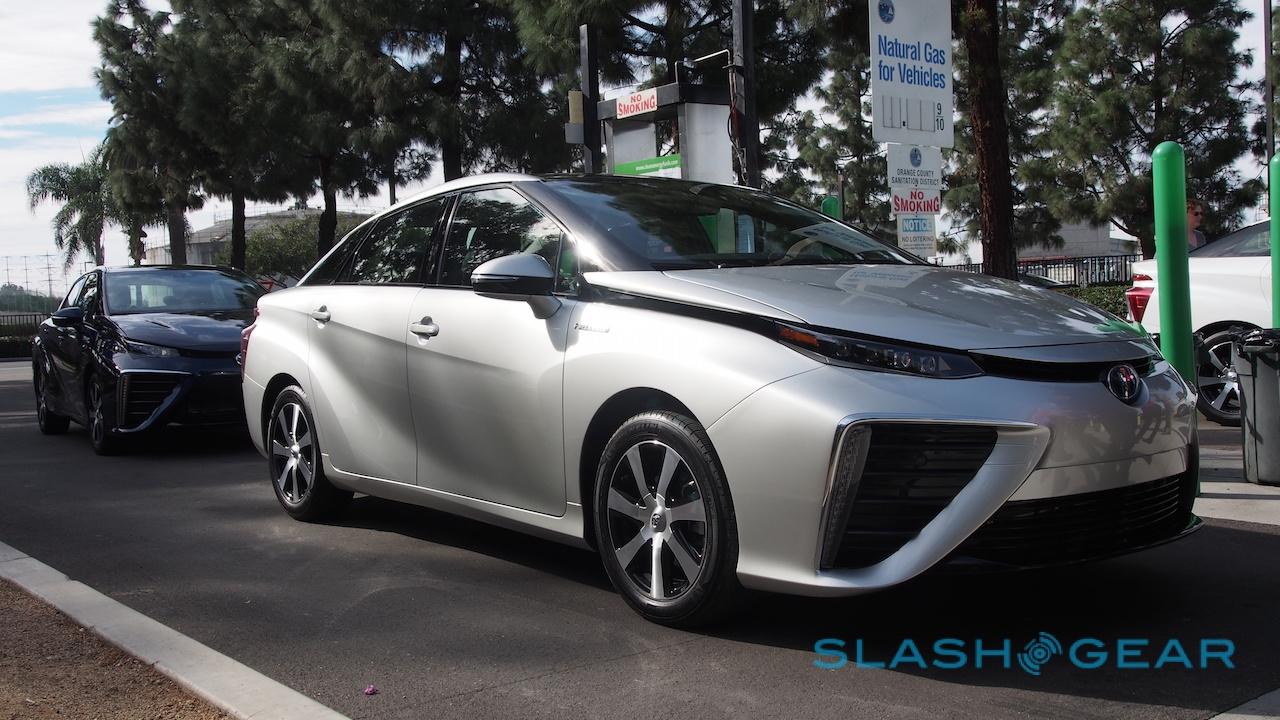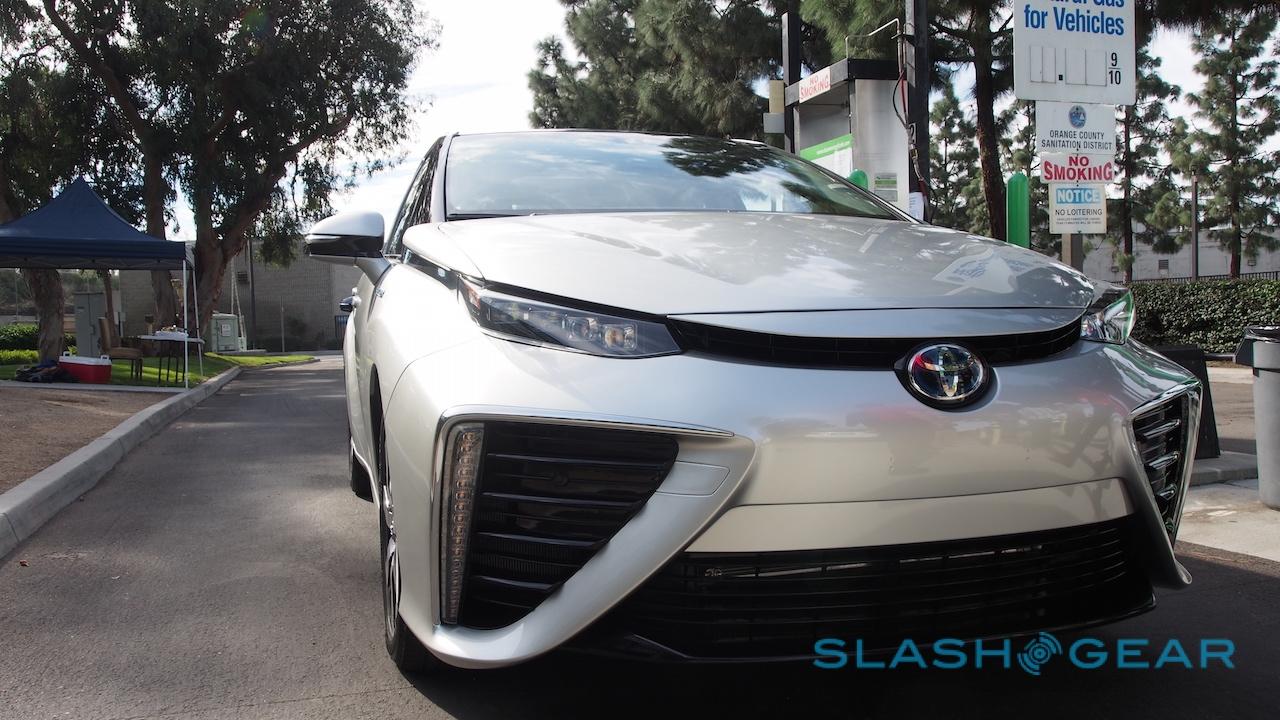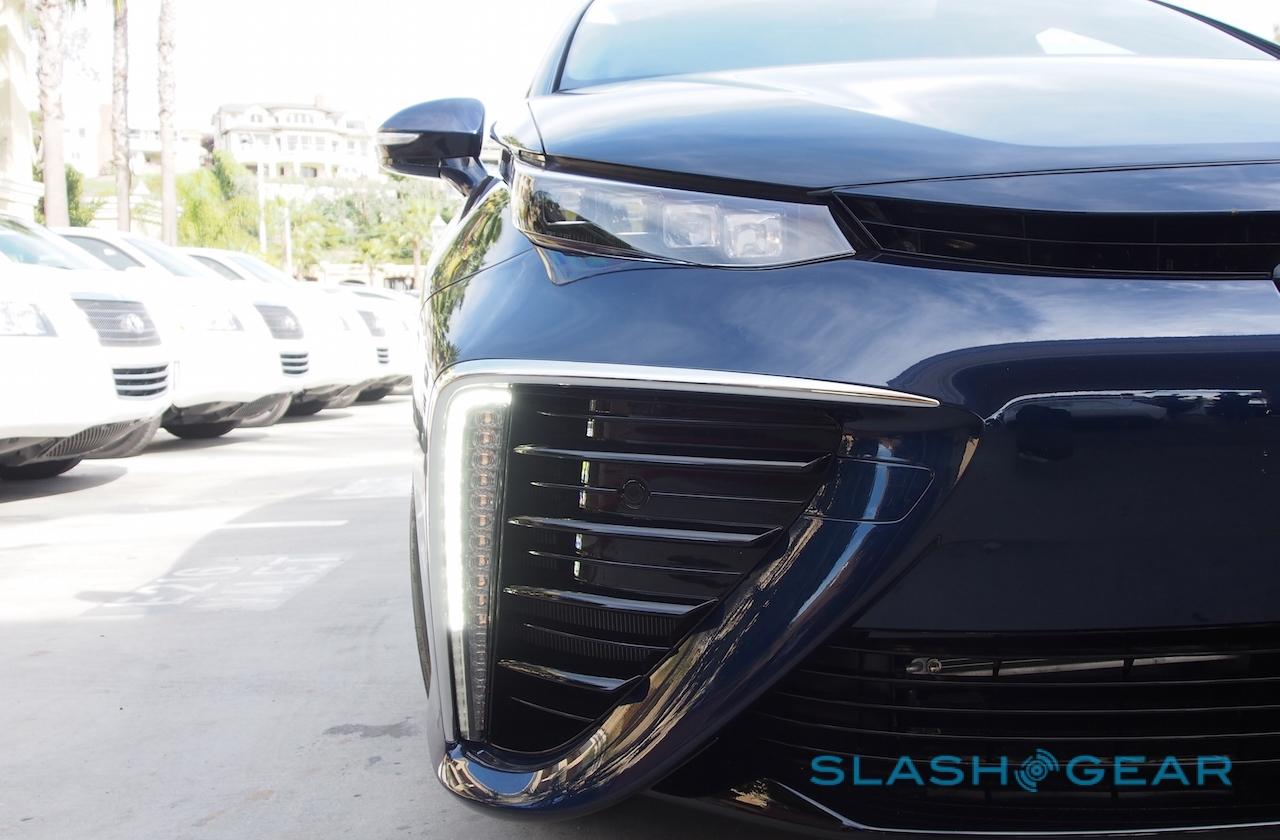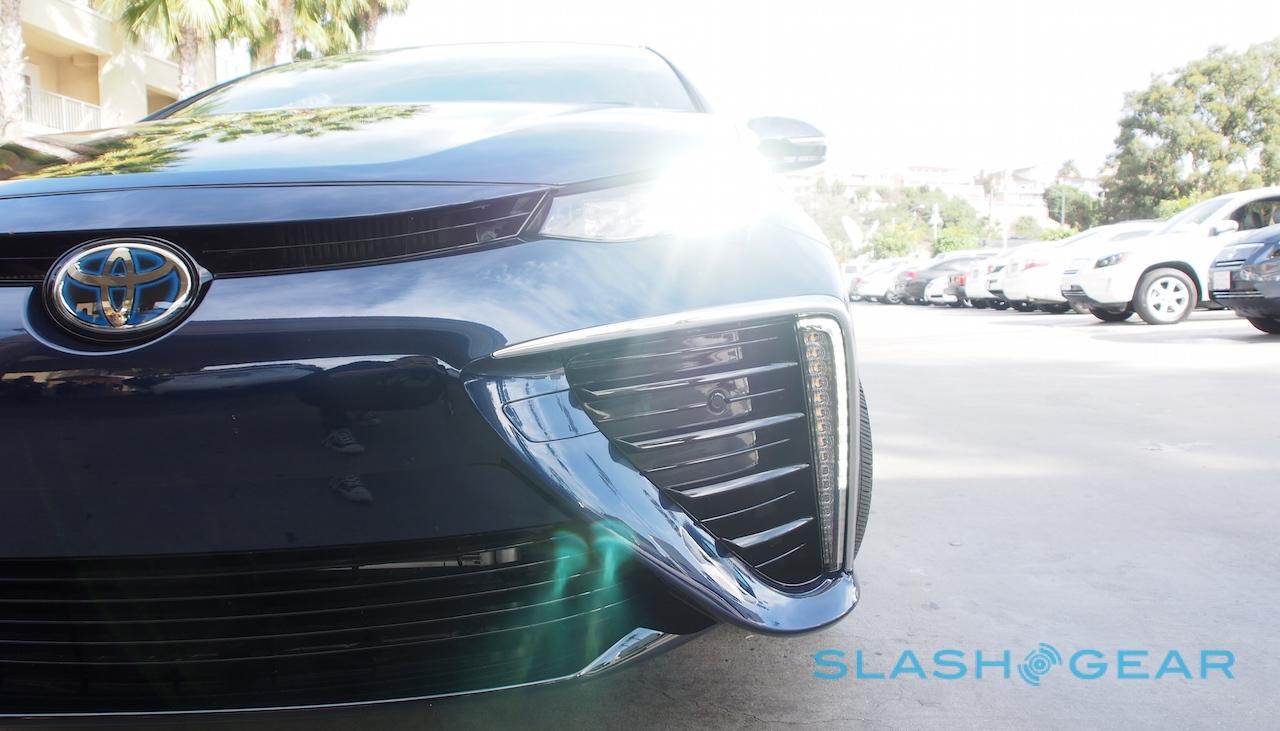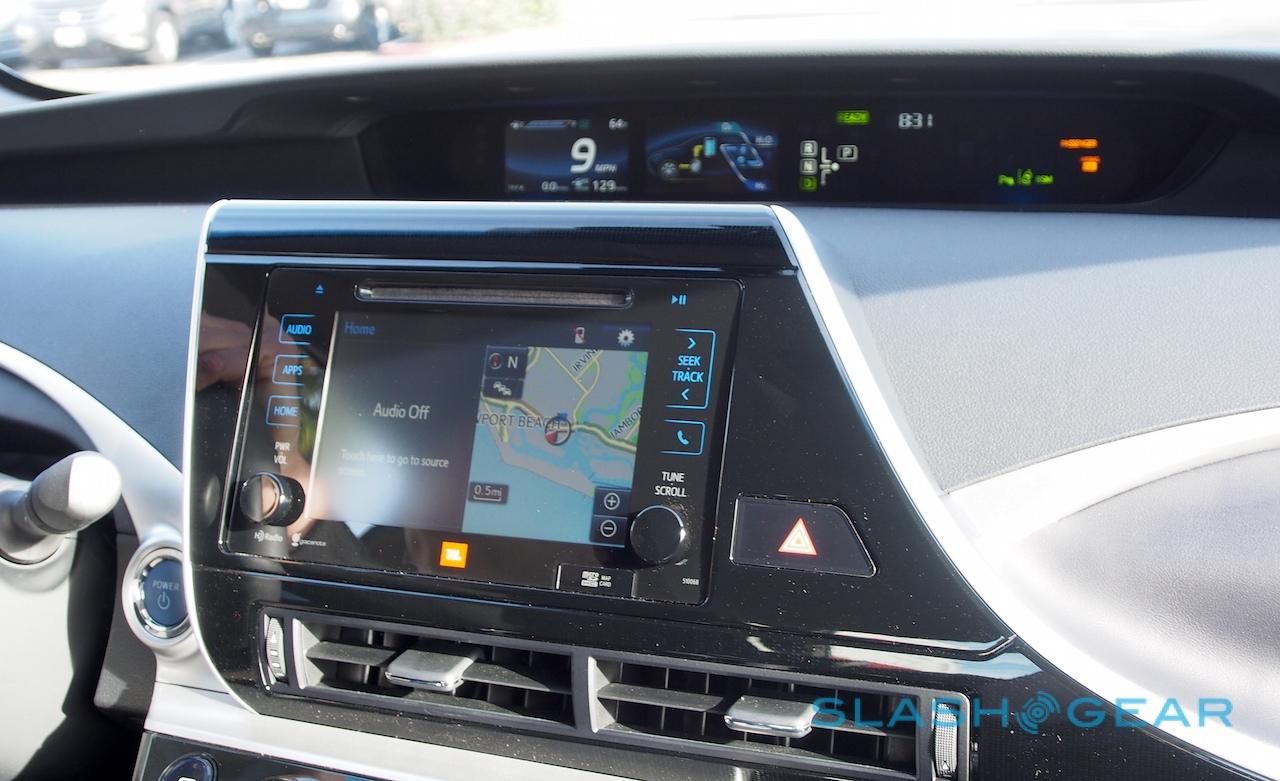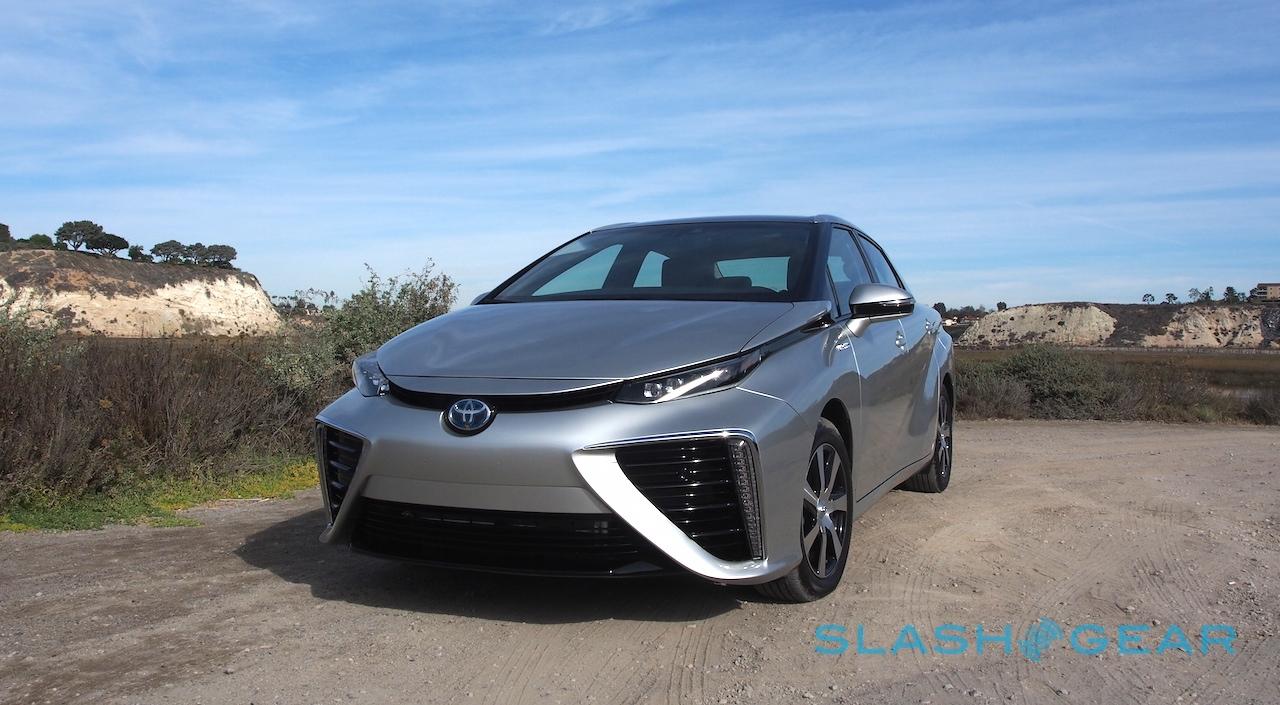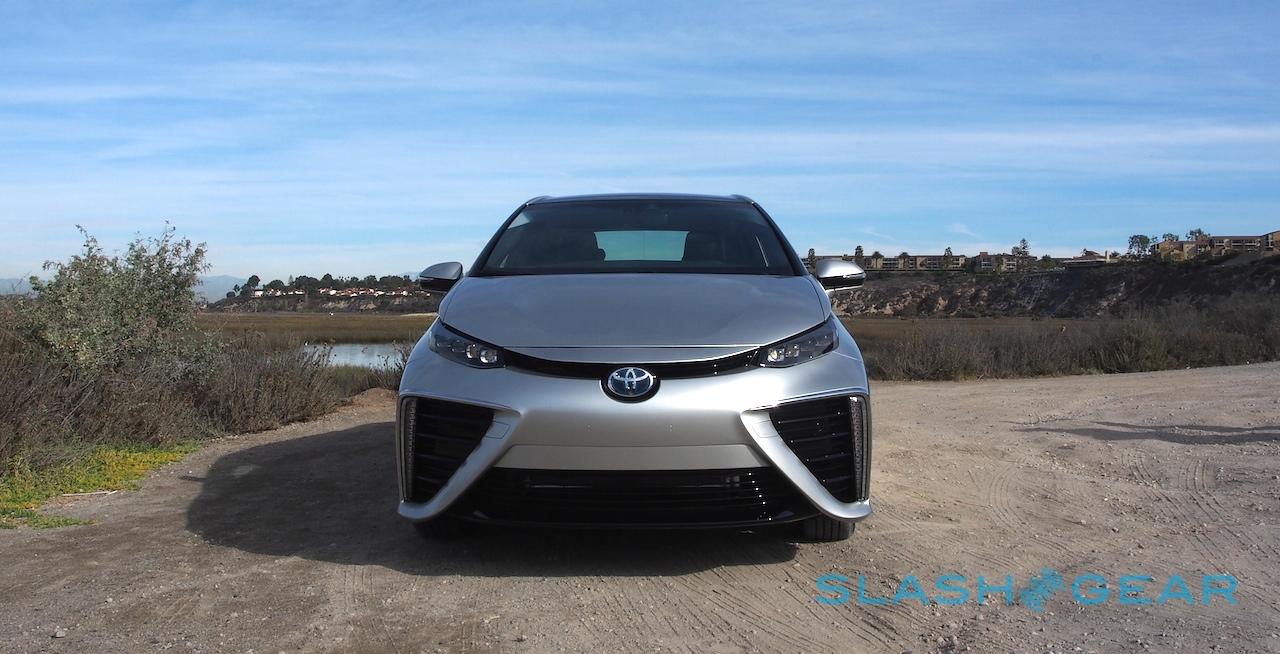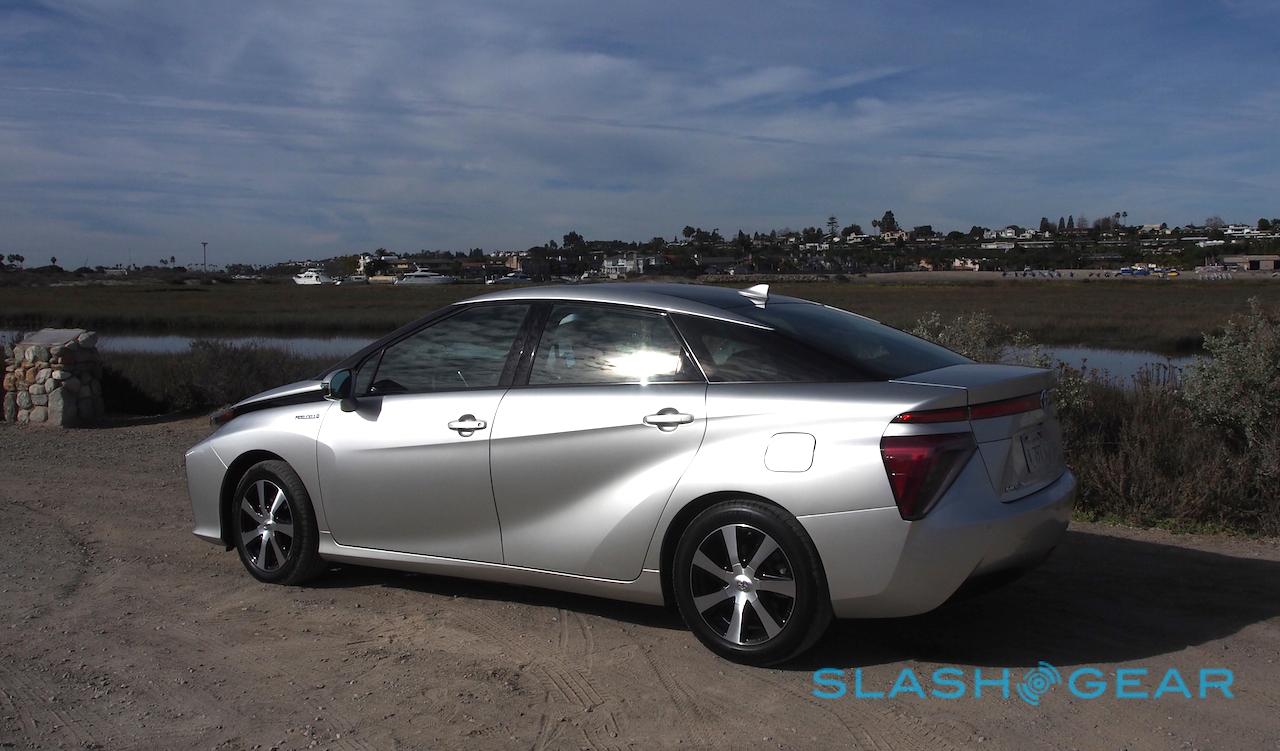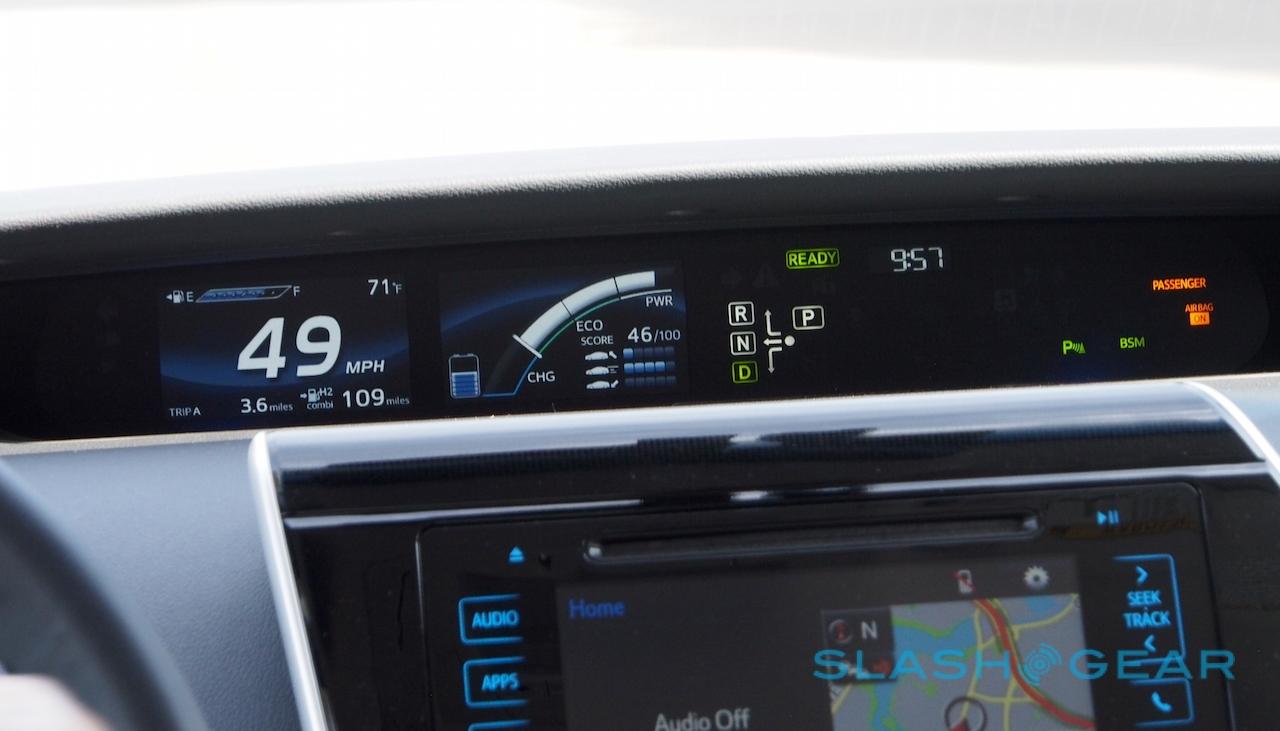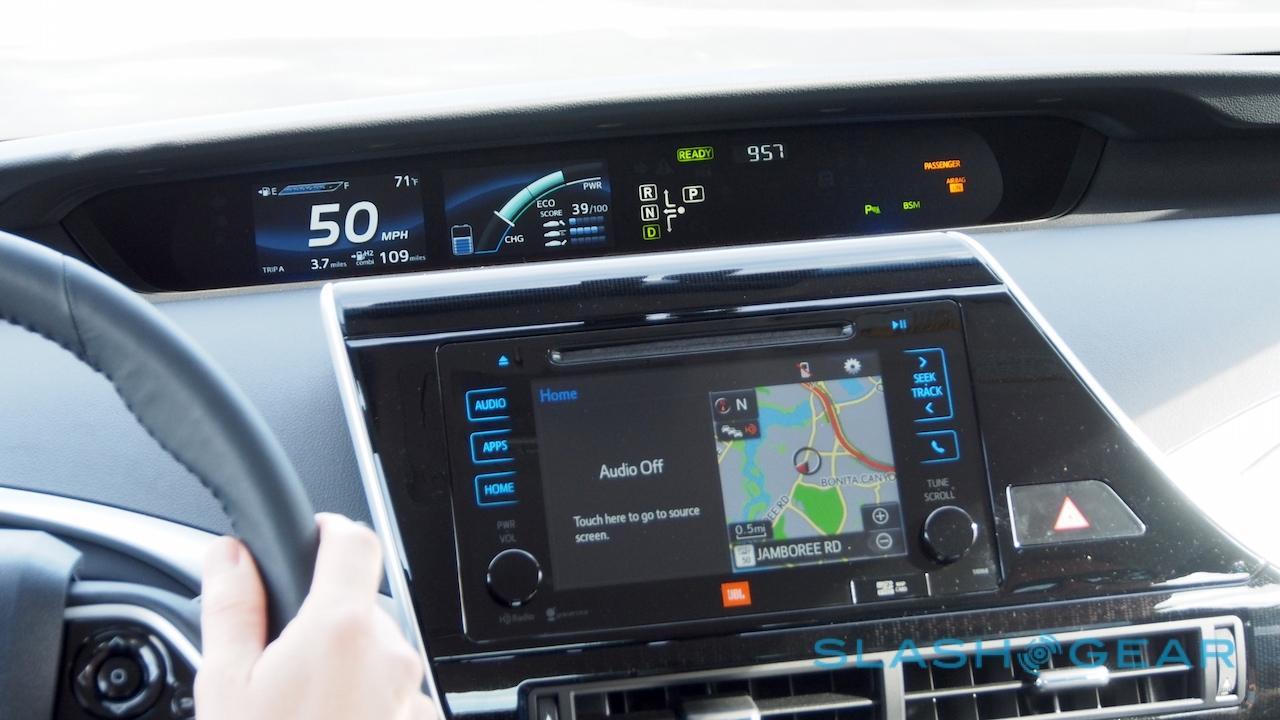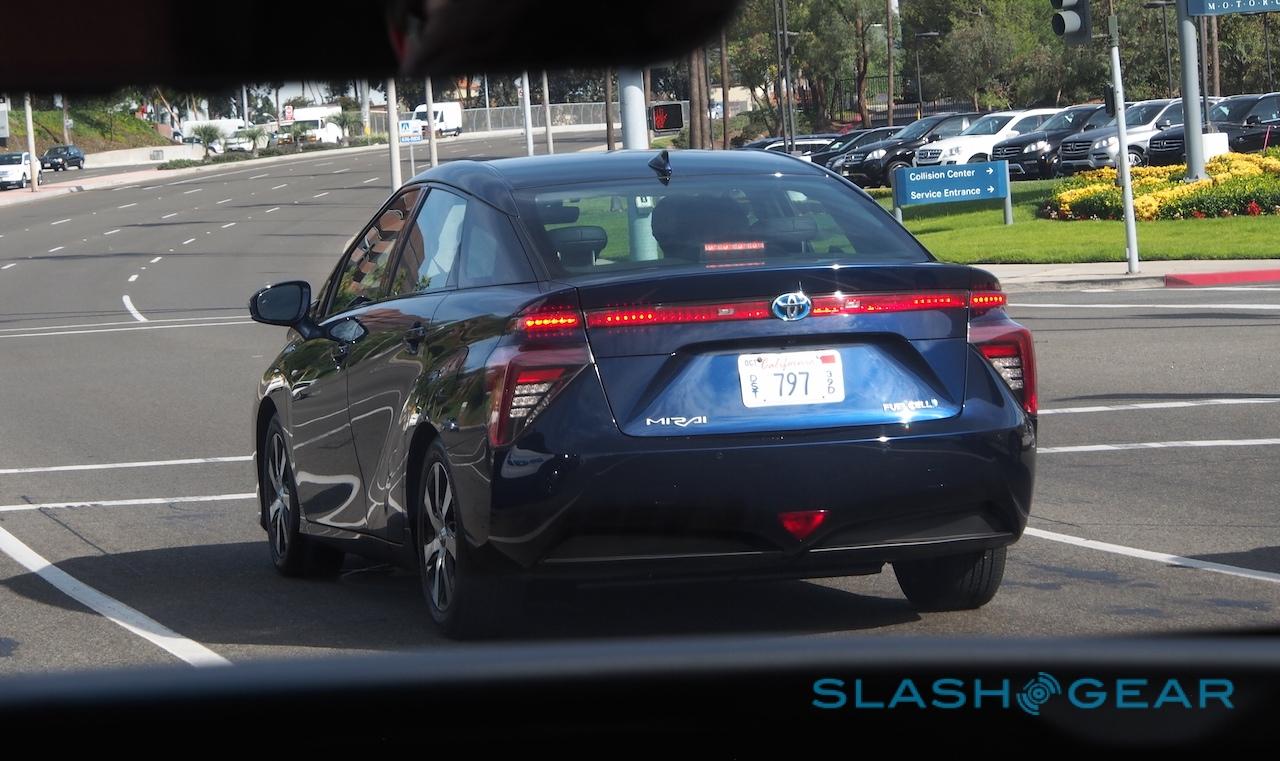2016 Toyota Mirai First-Drive - Fuel-Cells Dawning
You can't accuse Toyota of rushing the 2016 Toyota Mirai to market. The hydrogen powered sedan may look like a vision of the future circa Buck Rogers, but its fuel-cell powertrain is decidedly cutting-edge, not to mention determinedly optimistic around issues of infrastructure and regulatory commitment to zero-emission vehicles. At $57,500 pre-subsidies, it seems the future carries a significant cost of entry, too. So, after some time behind the wheel of the Mirai, the question remains: is the age of hydrogen finally upon us?
Little about the Mirai is simple, from the fuel-cell technology through the exterior styling, and into the interior. The powertrain is the culmination of two decades of research and development by Toyota, a homegrown fuel-cell stack with a solid polymer electrolyte fuel-cell and a world's first internal circulation system that, rather than demand a humidifier, uses some of the very water produced by the electrochemical reaction to keep the efficiency up.
Two hydrogen tanks, each made of layers of plastic, woven carbon-fiber reinforced plastic, and glass-fiber reinforced plastic, are located under and behind the rear seats, along with the nickel-metal hydride battery donated by the Prius. The fuel-cell itself is under the front seats, feeding electricity to the batteries via a four-phase boost convertor.
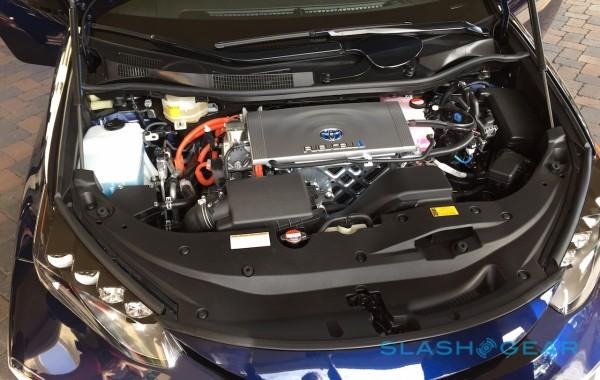
Finally, the electric motors are in the front, driving the front wheels. Toyota covers the fuel-cell system with an 8-year/100,000 mile warranty, with a 5-year/60,000 mile warranty for other power train components, and a 3-year/36,000 mile warranty for everything else.
Contentious hardly seems to begin to describe the Mirai's styling. At the front, I can't stop comparing it to a Cylon warrior from the original Battlestar Gallactica, with its huge vents – emphasized by the distinctive daytime running lights – and sharply delineated hood line. From the side, the high waistline conspires to make the wheels look surprisingly small – despite being 17-inches – particularly at the rear.
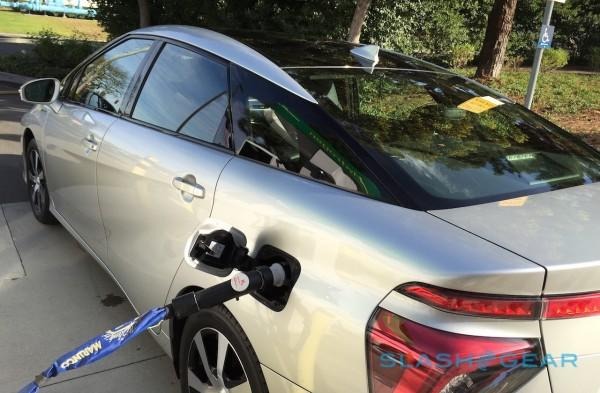
Toyota's "floating roof" conceit works better with lighter color cars, too, and the silver and pale metallic blue finishes are also friendlier to the riot of surfacing detail. Darker finishes, in contrast, can leave the Mirai looking slab-sided and hefty.
At the rear, it feels like Toyota should've opted for either the light strip running the width of the trunk lid or the protruding light clusters, not for both. It looks best from the front or rear three-quarter view, when the angles are most complimentary, and indeed better in the metal than in photos.
It's not a small sedan, at 1850 kg (4,078 pounds) and just over sixteen feet in length. That's more than a foot longer than a regular Prius, though trunk space is curtailed both by the batteries and the second hydrogen tank. You'll fit a couple of medium-sized cases, most likely, but nothing bigger, and the rear seats aren't designed to fold flat, either.
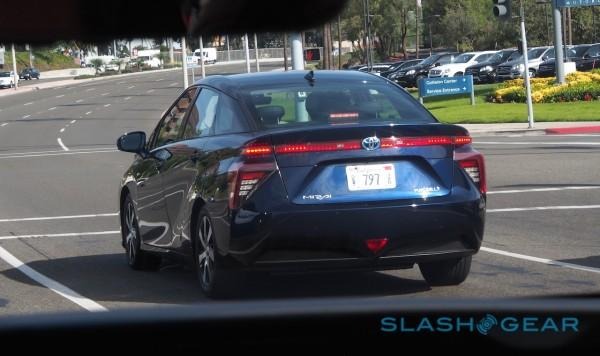
Inside, were it not for the occasional flicker of Japanese text on one of the multiple displays, it'd be easy to forget you were in a prototype. The seats – 10-way power adjustable, and heated front and back, though I'd wager active cooling would be more appealing for the initial California market were it an option – are firm and supportive, with great bolstering. The leather is of a higher quality than you'd find in a Prius, too.
Unfortunately, despite the size of the Mirai putting it in the full-sized sedan category, you only get space for four. The two rear seats are separated by a fixed armrest, with a pop-out cupholder and a deep stowage bin: useful, but probably not as much as a fifth seat might be. True, Chevrolet's Volt is a four-seater too, but the Mirai is a bigger car.
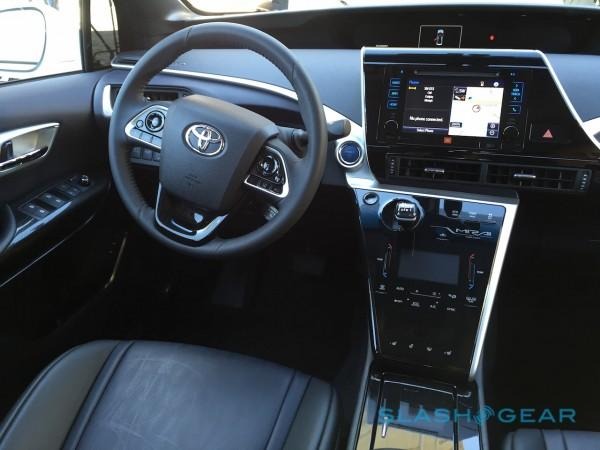
It's not the only odd design decision on Toyota's part. The center console is a perfect example of lacking restraint, reminiscent of the Prius dashboard in many ways with its graphs and graphics showing power shuffling from fuel-cell to batteries to motors, but even more complicated.
There are four LCDs in total: two in the top swathe, focused on speed, drive mode, and power monitoring, and then a touchscreen in the middle section for the infotainment. Finally, a small non-touch display is in the lower panel, dedicated to HVAC status.
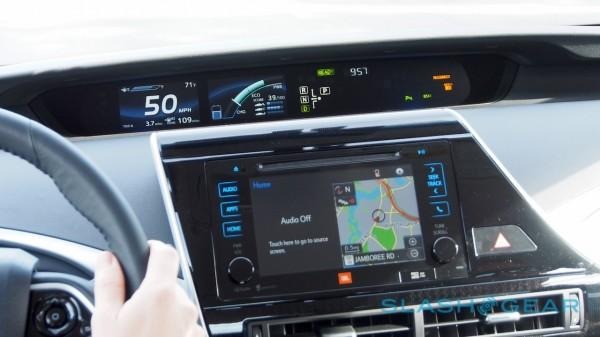
Around them are a surprisingly large number of buttons and controls. There are touch-strips to adjust driver and passenger temperature, capacitive buttons to control fan speed, but also some physical buttons to switch between ECO and Power modes. The latter look as though they should light up when pressed, but in fact you get a small icon far away on one of the top screens. A stubby transmission lever seemingly donated from the Prius jabs out from the middle.
You'd undoubtedly get used to it in the first few months of ownership, but it's overwhelming and confusing initially. Throw in the various buttons built into the wheel, not to mention another few dotted around the driver area, and you've got a lot of controls for a car which is, in practice, as straightforward as selecting Drive and jabbing the throttle.
Interestingly, when you do that it's not quite as silent as you might expect from an electric drive. Certainly, the motors themselves have a same subdued whine we're familiar with from the Prius, but the hydrogen system introduces its own array of pops, clicks, and hisses. There's a whoosh and a fizz when you plant your right foot, while the regenerative braking system thrums eagerly when you lift off.
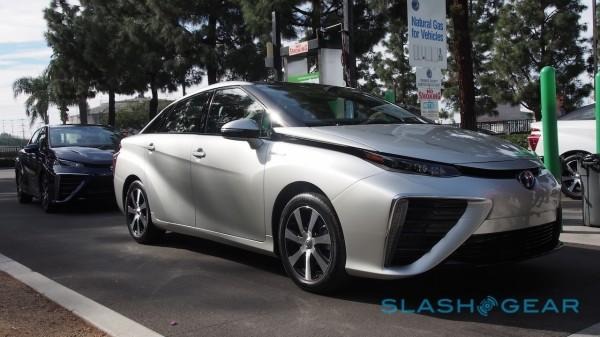
It helps gives the Mirai some much needed personality, even if that personality is akin to an eager hydrogen-powered porpoise. Similarly, while ECO mode seems to delay any form of acceleration until you're halfway through the pedal's travel, Normal and Power modes are more successful. There's fair pick-up away from the lights in Normal mode, but you get that 153 HP electric shove when you sacrifice a little more economy and switch over for maximum performance.
Overtaking and lane-changing at highway speeds were immediate and lag-free. Toyota quotes a 0-60 mph time of nine seconds and a top speed of 111 mph, neither of which is going to break any land-speed records, but it doesn't feel slow. The roughly three second 25-45 mph time helps when you're in the city, and the electric steering feels direct and is neatly weighted.
Toyota isn't saying what exact impact on economy each mode will have, and nor does it have overall consumption numbers, either EPA or unofficial. Estimated range is around 300 miles from a full tank of hydrogen – it takes approximately five minutes to fill up with at most 5 kilograms of compressed gas – and according to the onboard systems I was averaging around 52 MPGe (miles-per-gallon equivalent) with a mixture of stop-start city and highway driving, though as a prototype it's still far too early to draw any conclusions.
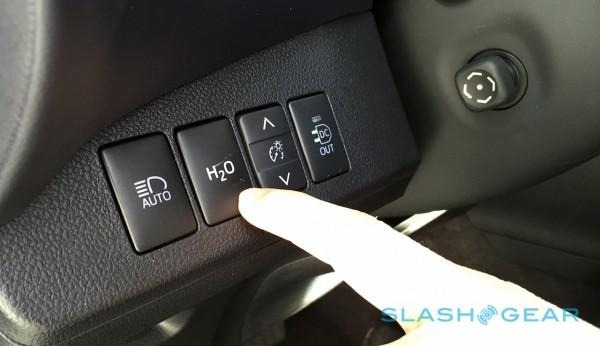
No matter what the range, the only thing you'll be releasing along the way is pure water. In fact, the fuel cell produces around 7cl per kilometer (3.81 fluid ounces per mile) of the stuff, which is automatically released periodically from a small hole underneath the car near the Mirai's rear bumper.
You can leave that discrete trickling up to the car to manage, but there's also an "H2O" button down to the left of the steering wheel which will trigger a manual gush. Toyota says that's there primarily to clear out the fuel-cell if you're parking the Mirai somewhere you know there's a risk of freezing temperatures (and, indeed, as a courtesy if you're parking in the Japanese system of stacked lots, rather than spritzing the vehicle beneath you).
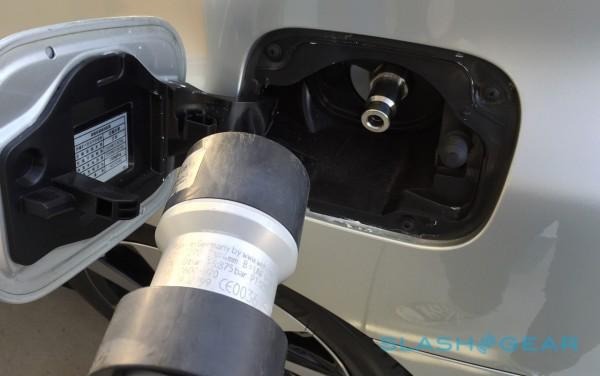
Officially, while the water that comes out of the fuel-cell system is potable, it's not recommended that you actually drink it. The fact that the outlet pipe is open to whatever spray gets kicked up from the road means it probably isn't going to taste all that great.
The other unusual control by the H2O button is marked DC-OUT. That works with what will be, initially anyway, the Mirai's only optional extra: a DC converter that turns the car into a generator for the home. With the Power Take Off (PTO) kit, a socket in the trunk connects to a variety of distribution cabling intended to keep the essentials in your home running should you experience a power cut or other outage.
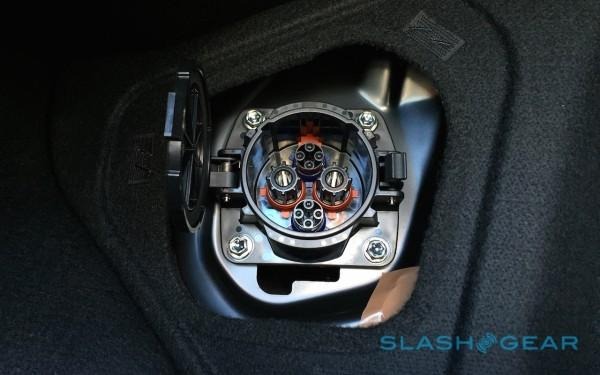
Installed, the PTO can put out up to 9 kW of DC power, to a total of approximately 60 kWh. So, while you wouldn't want to hook up your home air conditioning system to the Mirai, it would nonetheless be sufficient to run "the essentials" for up to a week, Toyota claims. Pricing for the PTO option haven't been finalized, though I'm hearing it will be in the region of $1,200.
Toyota's plans don't end with the Mirai as a backup generator, either. The company is also considering how the car could be used as a buffer with renewable energy systems like solar or wind, effectively acting as a battery and power source to fill in periods of downtime when wind or sunlight are insufficient.
Fuel-cells have plenty of potential then – on the road and laterally – and Toyota says it's in for the long-haul, not necessarily expecting stunning sales of the Mirai but confident the market will shift to embrace the technology. A common comparison the management team likes to draw is to the Prius, itself equally doubted and even derided at launch, but eventually not only a success but the spur of a new hybrid segment.
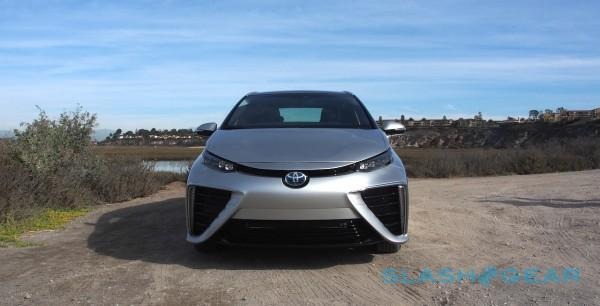
It's a compelling argument, certainly, though the playing field for fuel-cells isn't quite the same. Hybrids may have been unusual technology in the early years – it took about a decade to sell the first million, after all – but they could nonetheless slot relatively smoothly into existing infrastructure: at the end of the day, you drove your Prius to the gas pump like just about every other car. Toyota took a risk but it was one entirely in the company's own control.
The Mirai – and the vehicles it spawns – is dependent on a collaborative, multi-agency partnership within which Toyota is only a contributor, not the king. Simply throwing its (not inconsiderable) fortunes at the issue of building a network of hydrogen stations isn't practical; the company wants to sell cars, not become the next Shell.
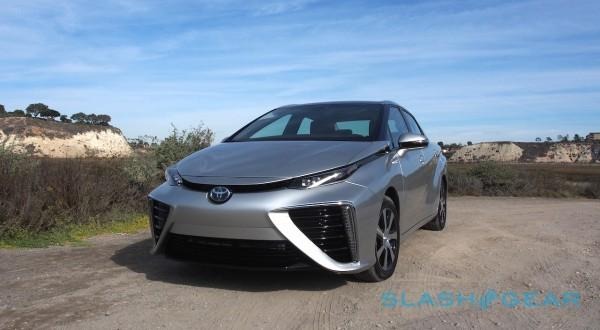
Deals with FirstElement Fuels and Air Liquide to subsidize hydrogen stations in California and locations in New York, New Jersey, Massachusetts, Connecticut, and Rhode Island are a start. Toyota claims the research is surprisingly conservative on just how many such stations are needed in order to satisfy the "average" target Mirai driver, with the goal being a refueling option within five or six minutes drive. As we've seen with range anxiety for regular EV owners, however, the fear of just how long your alternative-fuel car will run often doesn't quite tally with the reality. The bare minimum on paper is unlikely to be the same as the perceived minimum, for all but the most devoted and trusting hydrogen adoptees.
Free fuel for some limited period will help there (though I fear that Toyota runs the risk of further muddying the situation by not making it a simple "drive a Mirai, get free hydrogen" like Tesla's easily understood Supercharger deal), and the complimentary roadside support should at least take the edge off fears of being stranded with not even fumes in the tank.
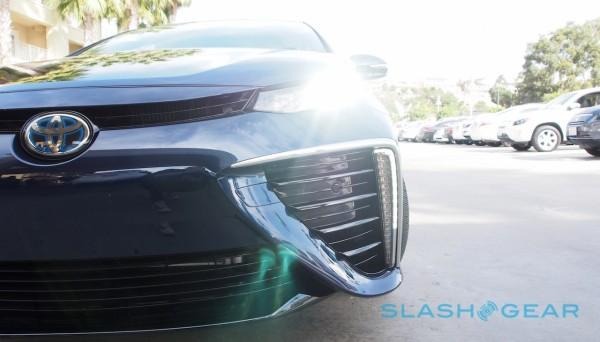
On the flip-side, confusion over just which government incentives will be in play when the car actually goes on sale in the US next year mean the suggestion of a $57,500 car available for $45,000 isn't set in stone. The fact that nobody can say exactly how much exactly the hydrogen will be when stations start charging for it is another uncertainty, though around $10 a kilo (and thus $50 to fill Mirai up) has been suggested.
Nothing about hydrogen adoption will be quick. Even if the projected roll-out of fueling stations goes to plan, they'll still be rare. Federal targets of a third of hydrogen being sustainably produced are more than ambitious, and still leave plenty of reliance on fossil fuels (though it's worth noting that, while you may be "moving the tail pipe down the road", the fact that hydrogen is roughly twice as efficient a fuel as gasoline means your overall emissions should be less, no matter where they're being emitted).
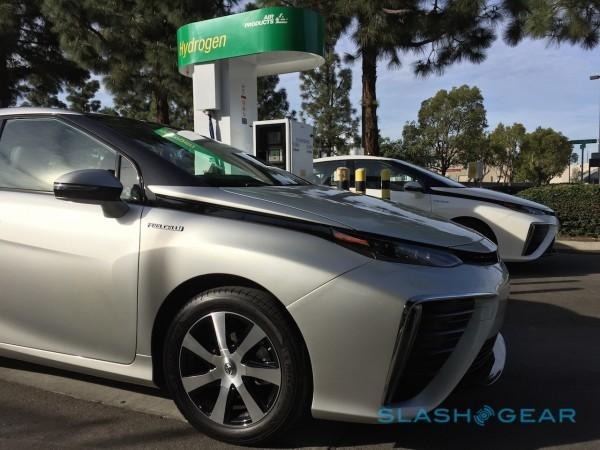
On that sort of playing field, Toyota's goal of a few hundred sales in California to begin with seems realistically humble. If it can convert those drivers into vocal fuel-cell zealots, all the better.
Seldom do I review a car that has so many "ifs" to it. Mirai will be a success if the distinctive looks don't turn drivers off, if the government subsidies are renewed, and if the price is sufficiently reduced for early-adopters. Equally, fuel-cell technology only has legs if the infrastructure is completed, if the cost of hydrogen fuel itself is seen as competitive, and if enough other car companies bring their own models to market.
I can't help but admire the Mirai and Toyota for making it, just for the sheer ambition involved. At the same time, it's a car for a niche within a niche, with projected volumes that – for a few years at least – make a Tesla Model S look like mass-market transportation. For the right driver, in the right location, and with the right bank balance, it may well make sense, but the jury is still out on whether hydrogen's time has come.


